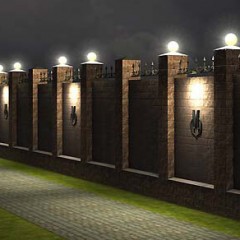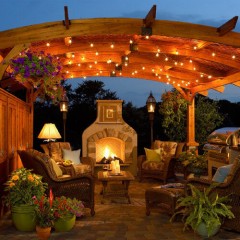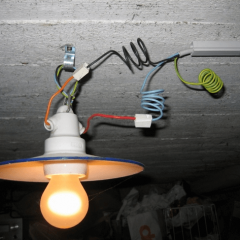What lighting should be in the greenhouse?
What you need to know
Before you start organizing greenhouse lighting, you must remember that for different plants the need for light is also different. The most photophilous are cucumbers, tomatoes, green onions, bell peppers, lettuce and other herbs. They need special care and light 10 hours a day and, of course, in the winter they will have to conduct additional illumination in order to preserve the crop.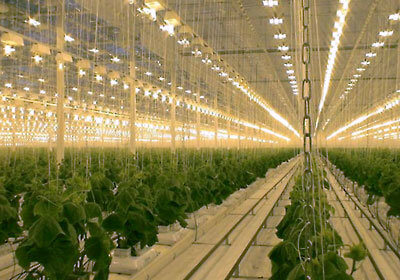
What lighting should be in the greenhouse? There are a lot of options, but we immediately warn that the usual incandescent lamps absolutely not suitable for these purposes. They quickly heat up, are short-lived, and besides, their spectrum lacks the necessary blue color for plants. Best for indoor gardens in the country or in a private house, fluorescent, gas-discharge and LED lamps are suitable.
We recommend watching a video on which this issue is examined in detail:
Lamp options
Fluorescent
The so-called fluorescent lamps (pictured below) is the most popular option for lighting a greenhouse and is often used for germinating seedlings. They do not heat up and in no way affect the temperature and humidity in the greenhouse, therefore they are practically safe for any plants. Fluorescent lamps are ideal for lighting in winter and at night. Among the advantages, one can also distinguish long-term operation, low price and a good radiation spectrum. The disadvantages are most often attributed to low light output, large product sizes and voltage dependence. It is mounted both horizontally and vertically.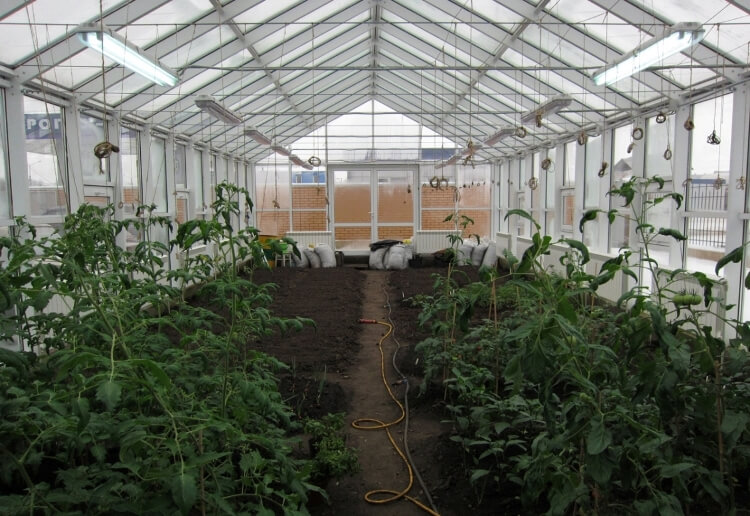
There are also energy-saving fluorescent lighting lamps. They are most suitable for owners of small greenhouses due to their compactness and the absence of any additional equipment. Profitability and durability are the main distinguishing features of these bulbs, which confirms the many reviews on thematic forums. The only thing to take care of is to choose a model with the right emission spectrum and lots of blue rays.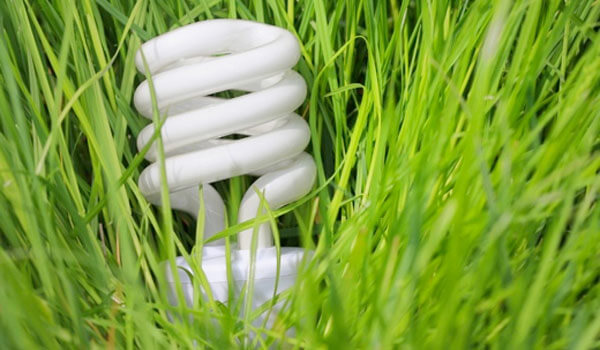
Gas discharge
Gas discharge lamps include mercury, sodium and metal halide lighting devices. This option is most often used for lighting industrial greenhouses, they are characterized by high light output and the best radiation spectrum for plants.In addition, a small plus is the compactness of products. As for the shortcomings, the high cost of the models, the complexity of the installation and disposal of bulbs are noted here. This is a professional equipment that you should think about only if you have a large complex and growing plants is also a profit. In the photo you can see the version with metal halide lamps: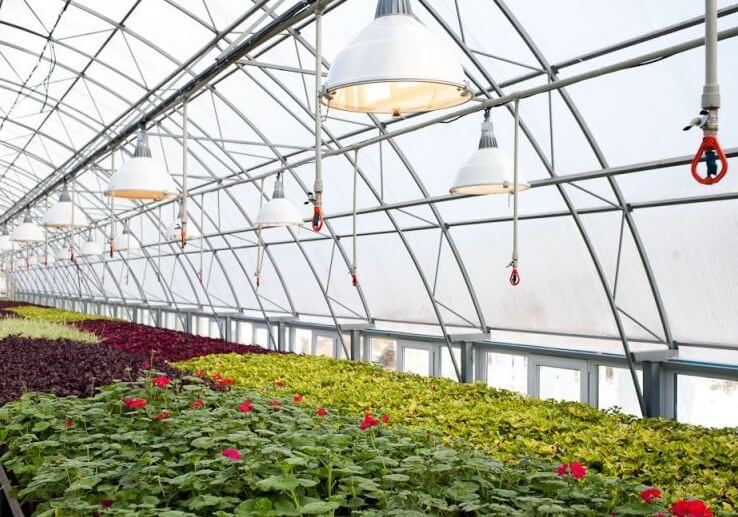
If you have chosen mercury lamps for lighting, then note that they can warm up, and in case of mercury breaking and leakage, the crop will have to be destroyed. So of all gas-discharge products, mercury models are less preferred. Metal halide devices are considered the best option, but they can disappoint with their fragility, at a rather high price and a complex installation system.
LED
LED strips and lights are gaining popularity in all areaslighting, including greenhouses. Almost unlimited service life, safety for people and plants, continuous operation even from low voltage and adjustment to the required spectrum - all this is about LED lamps. You can choose different colors depending on the needs of the plants - red, blue or combined, as in the photo below. Interestingly, white LEDs are currently under development, which in the future will be able to completely replace sunlight. The only disadvantage is the relative high cost of such lamps. However, if possible, we advise you to opt for LED greenhouse lighting.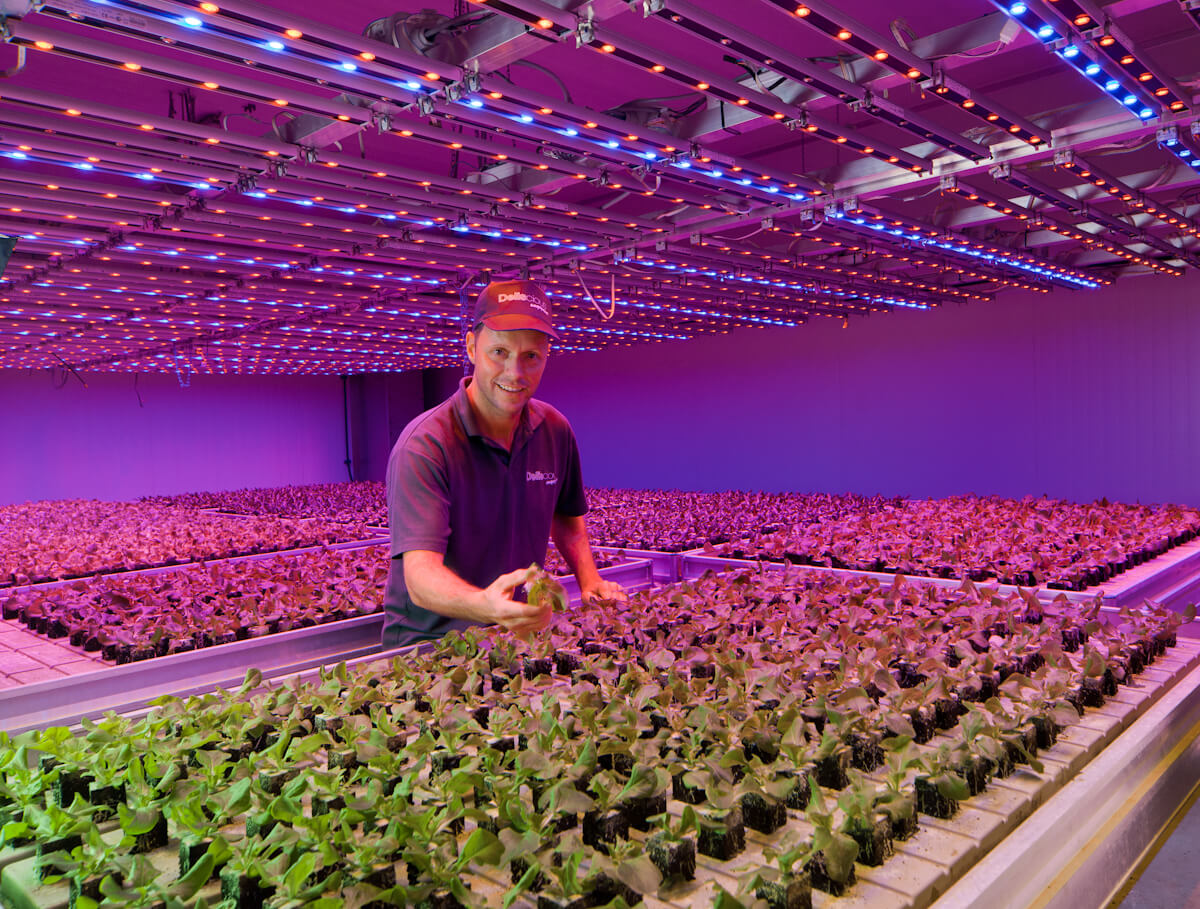
Useful information about lamps for additional light in greenhouses, you can watch on video:
Self electrification
It is not very problematic to independently conduct light in the greenhouse, even for a novice electrician. To get started, you need to remove a separate wire from the home switchboard and stretch it to the greenhouse. At this stage, you need to solve the main question - carry out electrical wiring underground either by air. In the first case, the requirements are as follows:
- the depth of the trench should be at least 0.8 meters;
- the cable underground must be protected by a corrugated pipe;
- the path of the trench should not intersect with the drainage system.
If you decide to hold the lighting in the greenhouse through the air, keep in mind that the wiring should not pass through the branches of trees (they can damage the cable in case of gusts of wind).
When you conduct the wiring in the greenhouse, it remains only to do the cabling to the places where the sockets and light switches are connected. At this stage, there should be no problems, the main thing is to correctly perform cable section calculation according to the formulas. Finally, we also advise you to watch the video, which clearly shows an example of installing lighting in a polycarbonate greenhouse:
That's all we wanted to tell about the lighting of the greenhouse with our own hands. We hope you find this information helpful. You just have to put the acquired knowledge into practice, namely to buy the necessary lamps and start installing artificial light in the greenhouse.
Also read:




